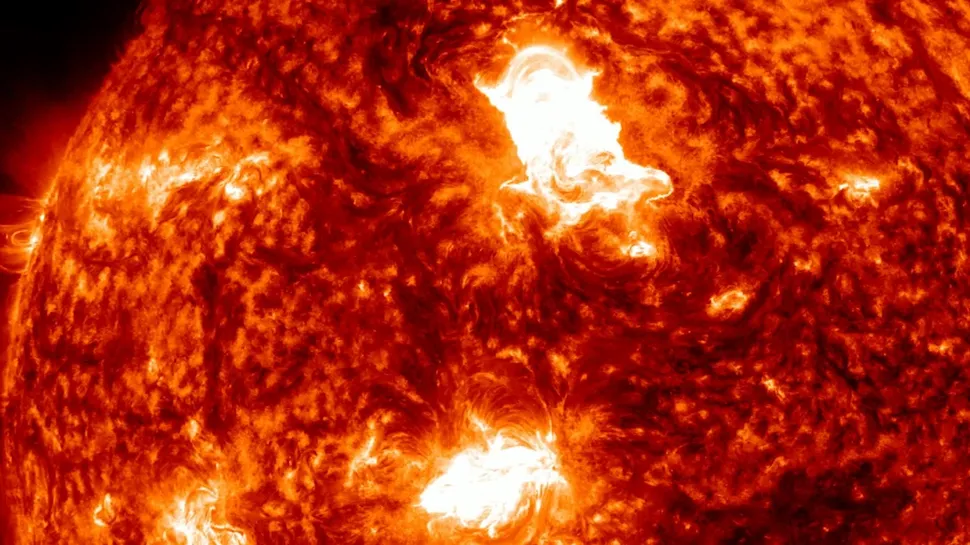The sun erupted on March 22 at 9:45 p.m. EDT (0145 GMT on March 23) with a powerful X-class solar flare and unleashed a barrage of super-hot plasma towards Earth in what is known as a coronal mass ejection (CME).
The energetic onslaught hit our planet at 10:37 a.m. EDT (1437 GMT) on Sunday, March 24, sparking a severe G4-class geomagnetic storm, the strongest solar storm since 2017.
Geomagnetic storms, also known as solar storms, are disturbances to Earth’s magnetic field caused by large expulsions of plasma and magnetic fields from the sun’s atmosphere in the form of CMEs. The U.S. National Oceanic and Atmospheric Administration (NOAA) ranks geomagnetic storms on a scale running from G1, which can cause an increase in auroral activity around the poles and minor fluctuations in power supplies, up to G5. This most extreme level can cause complete HF (high frequency) radio blackouts on the entire sunlit side of the Earth, lasting for several hours.
NOAA issued a geomagnetic storm alert on March 24 and detailed that with G4-class levels it may be possible to see the northern lights as far south as Alabama to northern California.
Alas, our planet had other ideas.
“Might this be a #solarstorm fizzle?” solar physicist Tamitha Skov posted last night (March 24) on X. “Although this storm will continue for hours yet, whether it will contain southward magnetic field is the key for big #aurora shows.” Skov continued.
When energized particles from the sun slam into Earth’s atmosphere our planet’s magnetic field funnels them toward the poles. The supercharging of molecules in Earth’s atmosphere triggers the colorful spectacles, which usually remain limited to areas at high latitudes for the aurora borealis (northern lights) and low latitudes for the aurora australis (southern lights).
Unfortunately, for aurora chasers across Europe and North America, the timing of the CME arrival meant much of the auroral activity was lost to daylight and by the time darkness fell, Earth had seemingly “closed its door” on auroras with a strong northward Bz shift.
Bz refers to the north-south direction of the interplanetary magnetic field (IMF), which is carried through the solar system by charged particles from the sun. Bz is a key player in determining how the solar wind interacts with Earth’s magnetosphere and affects auroral activity according to Spaceweatherlive.com.
If the Bz is orientated southward, the IMF connects to Earth’s magnetosphere which points northward. Just like two bar magnets with opposite poles attracting each other, a strong southward Bz can disrupt our planet’s magnetosphere and allow particles to rain down into our atmosphere along our magnetic field lines. You can think of a southward Bz as an “open door” for aurora-fueling particles.
But if the Bz is northward you can think of it as a “closed door” as the northward IMF fails to “connect” with our northward magnetic field. Much like two opposing bar magnets. Auroras can happen with northwards Bz but they require strong geomagnetic storms and the displays won’t be as dramatic as those seen when the door is open during southward Bz.
Source: https://www.space.com/strongest-solar-storm-since-2017-hits-earth-march-24



